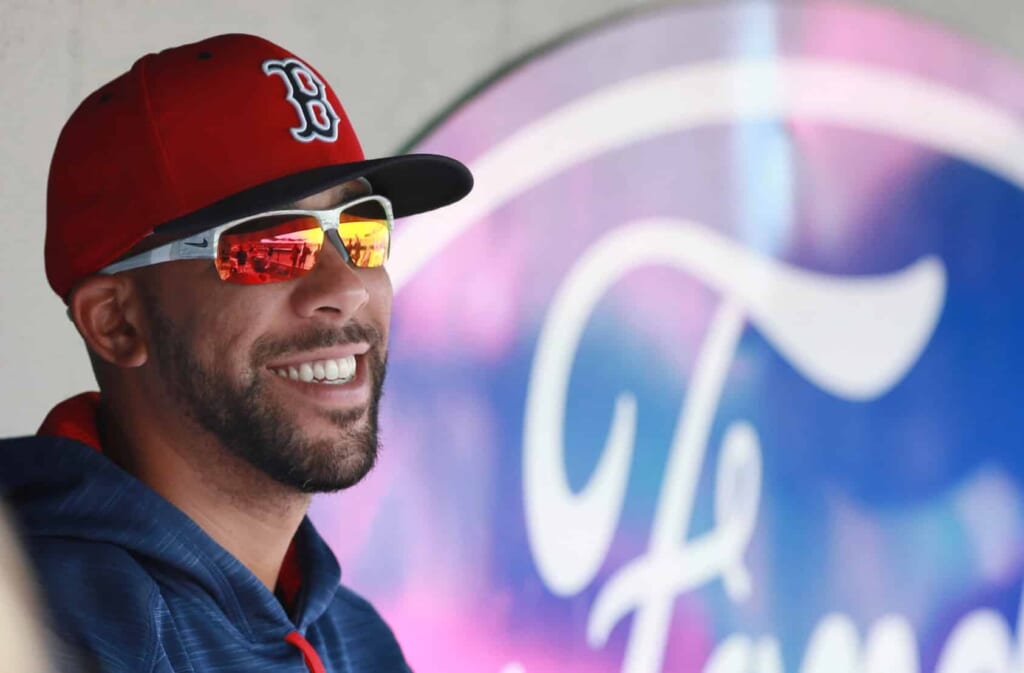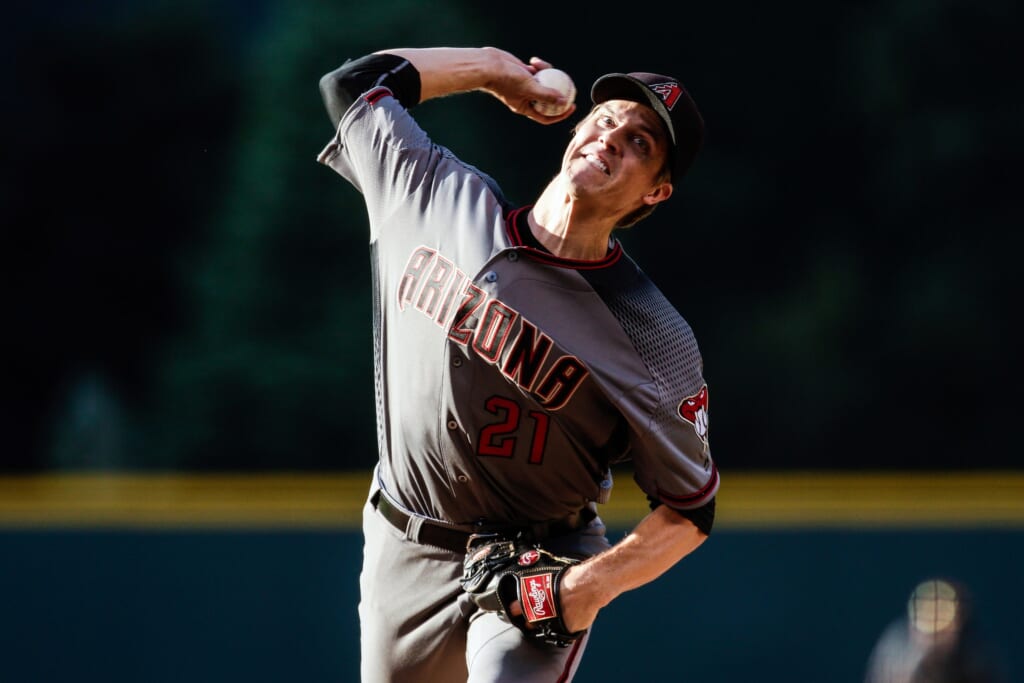
The postseason will soon be upon us, and the race for spots in the playoffs draws tighter. During a season that could provide of the most memorable finishes in years, the caliber of a team’s starting rotation can make all the difference.
The final playoff spots could come down to just a few critical aspects to determine how far a team will go. Bullpens are a critical element, while a team’s lineup can propel a team in any given week.
We’ve ranked the 10 best lineups and top-10 bullpens among playoff contenders. Now come the starting rotations.
Injuries have helped shape these rankings and shifted the strengths and weaknesses of some teams. From Lance McCullers’ forearm strain to Chris Sale’s persistent issues with shoulder inflammation, the landscape has changed in the second half of the season.
Here are the 10 best starting rotations among playoff contenders.
10. New York Yankees
In a one-game playoff, New York should normally feel confident in Luis Severino. The 24-year-old is among the best pitchers in baseball when his stuff is right — someone this team could rely on.
The problem is Severino carries a 7.26 ERA and .338 batting average allowed to opponents across six starts since the All-Star Break. Combine that with New York’s 4.36 ERA from its rotation one the past 30 days and a clear problem pexists.
So even if New York can slip past the Oakland Athletics or Houston Astros in the wild-card game behind Severino, the club then must hope for Masahiro Tanaka and J.A. Happ to be outstanding for six innings multiple times.
9. Chicago Cubs
After losing Yu Darvish for the season, it became clear the Cubs will have to stick with their current rotation. While they remain in solid position thanks to experienced veterans, there is reason for doubt.
A rotation with high expectations to start the season has largely disappointed. To make matters worse, things have been even worse in the past 30 days with a 4.15 ERA and .280 BAA. Yet, there is also reason to believe in this rotation from a postseason perspective.
Jon Lester and Cole Hamels have flashed the ability to dominate a game. Lester showed it with a 2.58 ERA in the first half, while Hamels carries a 0.79 ERA in five starts with Chicago. There’s just so much volatility on a nightly basis with these starters, which pushes them to ninth on the list.
8. Atlanta Braves
Atlanta’s rotation deserves more attention across the league. While there is no star in the group, the Braves have plenty of arms who could become household names in a few years.
Mike Foltynewicz is the headliner, and it’s an earned title given his team-best ERA (2.72) and strikeouts (161) across 24 starts. Behind him, Kevin Gausman has been brilliant since he landed in Atlanta with a 2.00 ERA and 0.96 WHIP across four starts.
Behind the duo, Julio Teheran and Sean Newcomb have been inconsistent. We’ve seen a much better version of Teheran as of late with a 2.45 ERA in August. Unfortunately, Newcomb has been on the opposite end with a 5.48 ERA this month. It’s not a great rotation by any means, but it’s a group that could stay alive and compete in a seven-game series.
7. Oakland Athletics
It hasn’t been a conventional season for Oakland’s rotation. Yet sneaky signings and trades have built a productive unit. Oakland’s grouping of Trevor Cahill, Brett Anderson, Mike Fiers and Edwin Jackson have been especially phenomenal as of late.
According to Andrew Simon of MLB.com, they combined for a 1.26 ERA across 93 innings dating back to July 30. Even while Sean Manaea continues to slump in the second half with a 5.33 ERA in his past five starts, his rotation mates step up during his bad stretch.
There is no ace in Oakland’s rotation and it’s difficult to trust any of Oakland’s starters off reputation. Yet they continue to produce, and with Oakland’s bullpen they only need to work five to six innings in a game. While the rotation isn’t the driving force behind this team’s success, it deserves a lot more credit than it is getting.
6. Boston Red Sox
Boston’s rotation doesn’t completely hang in the balance based purely off of Chris Sale, but the absence of Boston’s ace has a profound impact.
If he remains sidelined and it carries into the postseason, Boston must rely on David Price and Rick Porcello as its headliners. Given Porcello has consistently produced a four-plus ERA this season and Price is wildly inconsistent, that would present serious concerns.
A rotation trio of Porcello, Price and Nathan Eovaldi puts the Red Sox on the fringe of a top-10 list. However, the chance for Sale to return before the postseason and push everyone down a spot gives the club a chance to have a great postseason rotation.
5. Philadelphia Phillies
Frankly, Philadelphia’s rotation could be much better statistically this season if not for some of the worst defense in baseball. On the season, the Phillies’ rotation has a 3.75 ERA but their 3.54 Fielding Independent Pitching (FIP) demonstrates they are better than their defense allows.
It’s also a rotation with the chance to be elite, especially with Aaron Nola as the team’s ace. The 25-year-old has been one of the best pitchers in MLB this year behind a 2.13 ERA and 0.97 WHIP. Behind him, Jake Arrieta has pitched extremely well with a 3.25 ERA and a 101/42 K/BB ratio.
The tipping point for this rotation, which will determine if it’s great or just above average, is if Zach Eflin or Vincent Velasquez can be more consistent. We’ve seen it from Velasquez as of late with a 3.03 ERA since the All-Star Break, but it will need to carry over in the coming weeks.
4. Los Angeles Dodgers
After dealing with a plethora of injuries, the Dodgers are starting to see things come together with their rotation.
Over the last 30 days, the Dodgers’ rotation has posted a 2.85 ERA and held opponents to a .208 BAA. Clayton Kershaw has been outstanding since the break with a 1.77 ERA across six starts, and Alex Wood has posted a 2.36 ERA over the same span.
If Walker Buehler can maintain his stretch of dominance as a rookie, Los Angeles will have an excellent trio. Add in Rich Hill, who has turned things around in the second half with a 2.48 ERA, and it’s easy to see this rotation carrying the Dodgers. Now they need to actually make it into the postseason.
3. Arizona Diamondbacks
While Zack Greinke won’t win the Cy Young award this season, the 34-year-old has been outstanding this season. After a rough April, the righty has posted a 2.64 ERA with a 123/28 K/BB ratio in 20 starts.
Arizona’s entire rotation has been quite sharp as of late with a 3.19 ERA and a 2.86 FIP over the last 30 days. A big reason for the group’s success is Patrick Corbin. An impending free agent, Corbin owns a 3.17 ERA this season and has been even better since the ASB.
Headlined by two aces, Arizona puts itself in great position to start a postseason series. If Clay Bucholz even comes close to maintaining his 1.03 WHIP and 2.25 ERA across 13 starts, this becomes a lethal trio in a postseason series.
2. Houston Astros
Houston held claim to the best rotation in baseball for almost the entire season. In fact, for some time the rotation was being watched to set potential historic marks.
It was an incredible stretch of dominance, but we’ve seen the wheels come off a bit as of late. Over the last 30 days, Houston’s rotation carries a 3.80 ERA and allowed a .161 BAA over that span.
Justin Verlander (4.22 ERA) has struggled since the All-Star Break, and Charlie Morton has encountered some bumps with a 5.06 ERA in his last three starts. Meanwhile, Lance McCullers Jr. remains sidelined with elbow discomfort.
This rotation can still take over a series with Verlander, Gerrit Cole, Morton and Dallas Keuchel all capable of seven-plus shutout innings. Things just need to be corrected before the postseason for Houston’s rotation to once again be a dominant force.
1. Cleveland Indians
Even with the injury to Trevor Bauer, Cleveland’s rotation has been nothing short of phenomenal in recent weeks. While Corey Kluber is the obvious headliner, it’s been a collective effort of wiping out lineups on a regular basis.
Over the past 30 days, Cleveland’s rotation has the third-highest strikeout rate (27 percent), third-lowest BB/9 (2.04) and the lowest ERA (2.60) and FIP (2.81) in baseball.
Even without Bauer, Kluber, Carlos Carrasco and Mike Clevinger can provide an elite trio. All three starting pitchers posted a sub-2.50 ERA over the 30-day span and have displayed excellent command. If Bauer returns and is ready for the postseason, this rotation is capable of carrying Cleveland to a World Series title.

